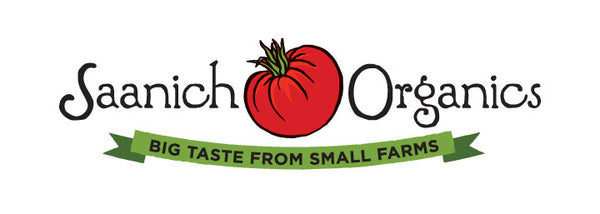My Store
Tropicana Green Leaf Lettuce
Tropicana Green Leaf Lettuce
Couldn't load pickup availability
A beautiful loose leaf variety that is very heat tolerant and makes an excellent summer lettuce. Grow for full heads or use in cut and come again harvests for baby greens. Resistant to tip burn and leaf scorch.
Start in trays, seeding 5mm deep. Transplant 30-45cm apart for heads, closer for looseleaf, or direct-seed more densely in rows for baby greens. Sow April through Aug.; stagger plantings for a continuous supply of lettuce. 7-15 days to germination.
Certified organic in British Columbia. IOPA # 1606, 1105, 1920.
How to Harvest Lettuce Seeds
Fast Facts
Latin: Lactuca sativa
Cross Pollination: Other lettuce varieties
Isolation Distance: 10 feet
Minimum Population Size (variety maintenance): 5-10 plants
Minimum Population Size (genetic preservation): 20 plants
Seeding and Care
Seed or transplant lettuce at 2’ spacing, or plant 1’ apart and harvest every other lettuce head, leaving the desired spacing. Care for lettuce plants as usual and rogue out any plants with undesirable traits. Lettuce plants will grow wide and up to 4’ tall with many branches when bolting, so don’t underestimate the amount of space they will need!
Seed Maturity
Once white fluff has emerged from the seed heads, keep a close eye on the seeds. When the seeds fall easily from the plants they are ready for harvest. You’ll want to catch them as soon as this happens to capture as much of the harvest as possible.
Seed Harvest
There are two main techniques for lettuce seed harvest. The first is more time consuming but yields more seeds. The second misses more of the seeds but is more time efficient.
Option 1: Gently lean the lettuce plants over a large paper bag or bin and shake off mature seeds. You will need to revisit the plants several times to catch seeds as they ripen. Make sure seeds are completely dry then rub against a fine screen to dislodge fluff then screen and winnow to separate any plant debris.
Option 2: Watch seed heads as they develop, and harvest all at once when it appears that the majority of the seeds have ripened. Some will have dried and dropped by this point and others will not be ready yet, but you are aiming for the largest quantity ripened at a single time. To harvest, cut the whole seed heads and place them in a paper bag, or an open slotted crate lined with paper and let the seed heads dry. Then, knock the seed heads against the side of a bin to knock off the remaining seeds. Make sure seeds are completely dry then rub against a fine screen to dislodge fluff then screen and winnow to separate any plant debris.


